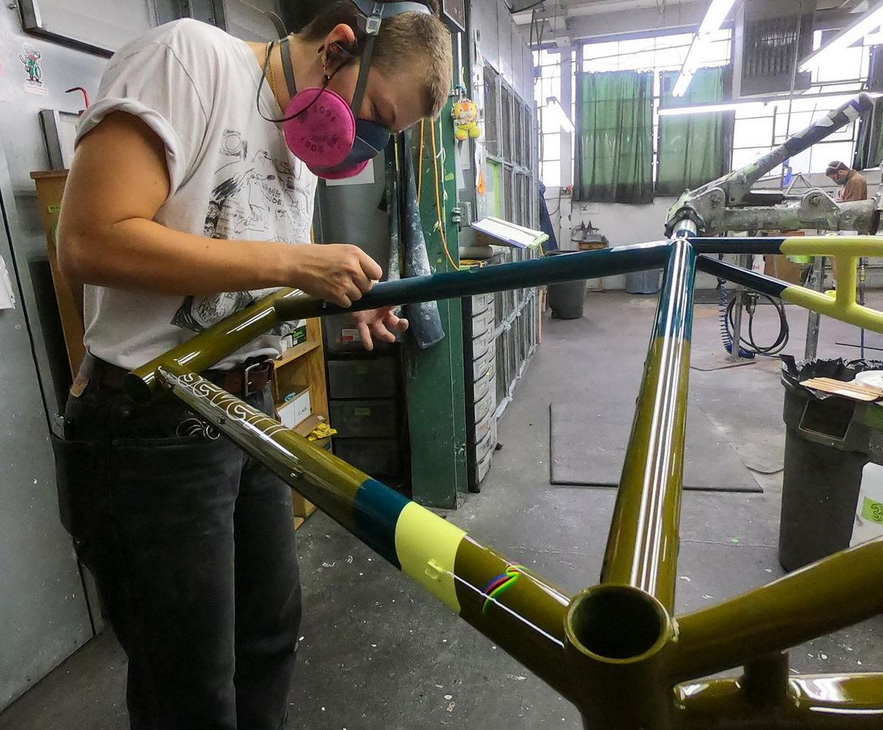Painted frames get prepped, then hung on the rack just outside the odd looking, seemingly out of place, paint booth. Its silver walls look like nothing else in the building. A sign hangs above the door that reads “time machine.”
The mixing room, one of the three chambers that make up the booth, has a floor spattered with colorful droplets, like a canvas documenting every frame we’ve ever painted. Every color, and there are probably a few hundred million, can be mixed in that little room.
The sound of the paint mixer is just like the one you hear at the hardware store. Just a few ounces of paint will cover a bicycle frame. They get mixed and poured into a cup, loaded in the sprayer, then hooked to the compressor in the spray room.
The spray room is entirely white. Your frame, masked and primed, is clamped into another stand. With the flick of a switch, the room’s filtration system is activated, and ooo-woosh! New employees look up to see if the booth really is a time machine.
Safe in mask and protective suit, the painter sprays your frame, back and forth in even, swooping passes. Complex schemes require several trips to the spray room, so it’s not always easy to see just what the paint job will look like until the masks are removed in the drying room next door.
It’s not uncommon to see employees peeking in the window to see what beautiful colors and schemes people have dreamt up. When the paint and clear coat have dried, the frame is carried back to the finishing department where a framebuilder will give it the final touches.
Every day, finished frames leave our shop floor and find their way into cardboard boxes destined for riders all over the world. You are never far from this process. Your name, your information, travels with your bike each step of the way. The builders know you in some small way and take great satisfaction, knowing you will ride what they build.
This is part four of a four-part series on the Seven framebuilding process. Be sure to check out parts one, two, and three to learn the whole story.

